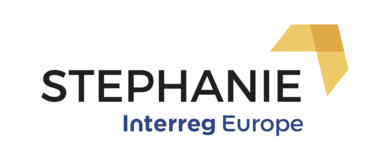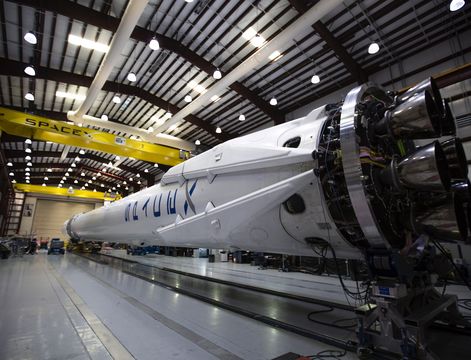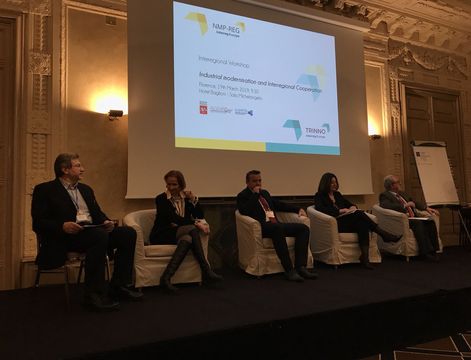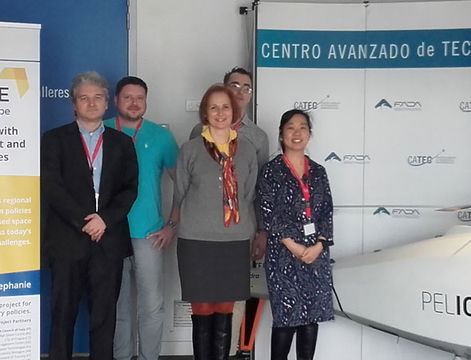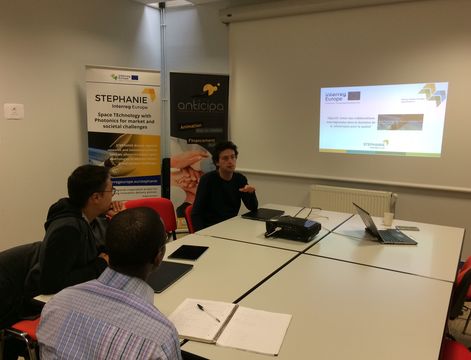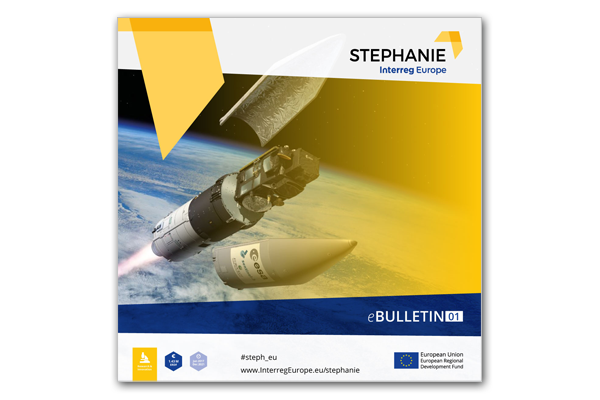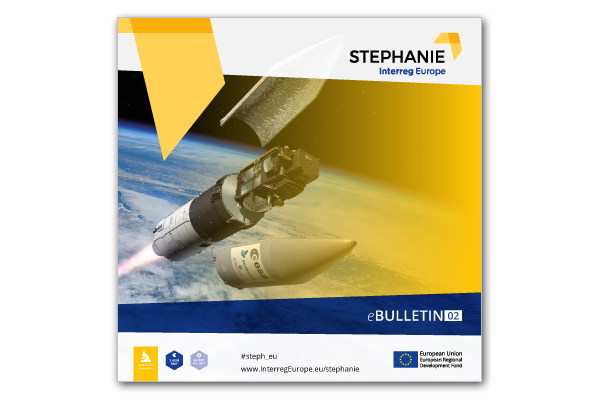Space technologies based on photonics are considered as one of Europe’s areas of key industrial competence. They have huge potential to address several today’s grand societal challenges, in particular health and wellbeing, climate action and secure societies. However, this potential will be wasted if public policy fails to address the gap between space research and its application on the ground. A long-term challenge is to ensure that R&I investments exploit the opportunities offered by space (e.g. huge availability of data) by ensuring that applications and services are produced to address societal challenges and that they reach the market.
For five years, Interreg Europe project “STEPHANIE” linked 8 partners from 7 European regions to improve regional innovation policies towards a more effective use of R&I in space technology based on photonics to develop products with strong market potential and capacity to address socio-environmental challenges. After four full “virtual exchange” semesters, STEPHANIE partners were really looking forward to exploiting the additional year of exchange activities to finally meeting in person. Indeed, the meeting in Düsseldorf was a huge success and an interesting opportunity to explore the local space sector ecosystem. Following, we showcase some exemplary results of policy changes in the regions.
In Tuscany, STEPHANIE led to an improved strategic focus of the Tuscany Region research & innovation Strategy (RIS3), thanks to a participatory approach in the mid-term review involving all relevant stakeholders within the aerospace sector. The Aerospace sector and technologies, that in the first version of our Smart Specialisation were generally included in the ICT-Photonics and Smart Factory priorities, needed to be better declined. The RIS3 now includes STEPHANIE contributions and new specific roadmaps on the space sector.
In Prague, simplification of rules for funding was introduced within the Technology incubation programme. Thanks to the transfer of good practices for SME grant schemes from Tuscany region discovered in STEPHANIE, the Programme managed to be flexible with less administrative burden for all applicants.
The Region of North Rhine-Westphalia established a “AeroSpace.NRW” cluster. This would probably not have been possible without STEPHANIE and the opportunity to involve local stakeholders in local meetings. In the second phase of STEPHANIE, the activities were continued by the newly established AeroSpace.NRW network in close coordination with the NRW Ministry of Economics. Secondly, the aerospace sector as a relevant topic in North Rhine-Westphalia's innovation strategy was introduced.
The exchange between the regional partners from Belgium and France led to a new cooperation: the project named CAFCA (“Capteurs Auto-calibrés sur Fibres multi-Coeurs pour Applications embarquées”) was officially accepted by Walloon and Brittany managing authorities and funded by both Brittany and Wallonia, with a total budget of 1,9M€. The project includes also some non-funded stakeholders from both regions (Thales Airborn systems (TAS), SONACA, Ixblue).
In Durham STEPHANIE resulted in the introduction of Space and Satellite Applications as a Local Smart Specialisation theme in the North East, thanks to the approval of the Innovative Delivery Partnership (IDP) Framework Programme, that includes Space and Satellite as key regional emerging sector. This change would not have happened without STEPHANIE, because the engagement with NELEP (IDP managing authority) and MHCLG (the UK managing authority) to influence strategic support for Space was limited at the beginning of the project. It was the engagement with the STEPHANIE partners and the learning gained from the exchanges and visits that provided ideas for many of the actions in the plan, particularly for the one on getting strategic support for region-wide smart specialisation.
In Andalusia, STEPHANIE boosted the development of a new regional policy, the Andalusia Aerospace Strategy (AAA2027). It defines, in a short-medium term map (2020-2027) the objectives, programmes and strategic lines of the regional aerospace sector. The project provided inspiration for the definition of two strategic actions, aimed at fostering companies into digitalization an the Space sector and Disruptive technologies.
Beyond this close cooperation on concrete policy changes, the project has also established sustainable and resilient links between the regional innovation clusters and regional authorities. On this basis, there is a continuous lively exchange between the partners, among other things on new technology areas that can be addressed in a coordinated manner in the future.
